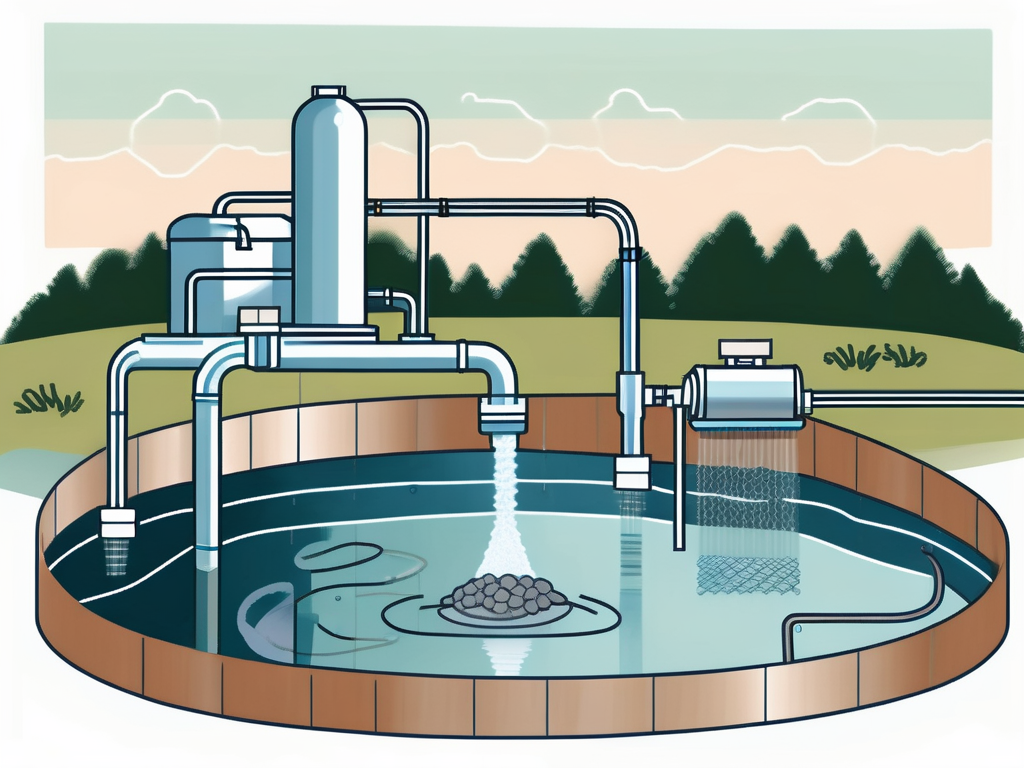
Sewerage: Wastewater Treatment Explained
The process of wastewater treatment is a complex and integral part of modern society's infrastructure. It involves the removal of contaminants from wastewater, primarily from household sewage, to produce an effluent that can be returned to the water cycle with minimal environmental impact. This article will delve into the intricate details of this process, providing a comprehensive glossary of terms and concepts related to sewerage and wastewater treatment.
Understanding the process of wastewater treatment is crucial for engineers, environmental scientists, and policymakers. It's also valuable for the general public to have a basic understanding of how this essential service works, as it impacts our daily lives and the health of our environment. This glossary serves as a detailed guide to the terminology and processes involved in wastewater treatment.
Introduction to Wastewater
Wastewater is any water that has been adversely affected in quality by anthropogenic influence. It can originate from a combination of domestic, industrial, commercial or agricultural activities, stormwater runoff, or from sewer inflow or infiltration.
The composition of wastewater varies widely depending on the source. It can contain physical, chemical, and biological contaminants that need to be removed before the water can be safely discharged back into the environment. The process of removing these contaminants is what we refer to as wastewater treatment.
Types of Wastewater
There are several types of wastewater, each with its own unique set of characteristics and treatment requirements. These include municipal wastewater, which comes from homes and businesses; industrial wastewater, which comes from manufacturing processes; and agricultural wastewater, which comes from farming activities.
Stormwater runoff is another type of wastewater. It's generated when rainwater washes over land and hard surfaces, picking up pollutants along the way. This water can carry a variety of contaminants, including sediment, oil, chemicals, and trash, into the sewer system.
Wastewater Treatment Process
The wastewater treatment process is a series of steps designed to remove physical, chemical, and biological contaminants from wastewater. The goal is to produce an effluent, or treated water, that can be safely returned to the water cycle or reused for other purposes.
The specific steps in the treatment process can vary depending on the type of wastewater being treated and the specific contaminants present. However, most treatment processes include some combination of physical, chemical, and biological treatment methods.
Physical Treatment
The first step in the wastewater treatment process is usually physical treatment. This involves the use of screens and grit chambers to remove large objects and coarse solids from the wastewater. These materials can include everything from rags and plastic bags to sand and gravel.
After the wastewater has been screened and de-gritted, it's typically sent to a primary clarifier. Here, the wastewater is allowed to sit undisturbed while heavy solids sink to the bottom and lighter materials float to the surface. The settled and floating materials are then removed.
Chemical Treatment
Chemical treatment involves the use of chemicals to remove contaminants from wastewater. This can include processes like coagulation and flocculation, which use chemicals to make small particles stick together so they can be more easily removed.
Chemical treatment can also involve disinfection, which uses chemicals to kill or inactivate harmful microorganisms in the wastewater. Common disinfectants used in wastewater treatment include chlorine and ultraviolet light.
Biological Treatment
Biological treatment uses microorganisms to break down organic matter in wastewater. This process is often carried out in aeration tanks, where air is pumped into the wastewater to promote the growth of bacteria and other microorganisms.
After aeration, the wastewater is typically sent to a secondary clarifier, where the microorganisms and their waste products settle out of the water. The resulting sludge is then removed and further treated.
Sludge Treatment
Sludge is the solid waste material that is produced during the wastewater treatment process. It contains a mixture of organic and inorganic materials, as well as a large number of microorganisms.
Before it can be disposed of, sludge must be treated to reduce its volume, improve its consistency, and stabilize the organic material it contains. This process typically involves thickening, digestion, dewatering, and sometimes composting or incineration.
Thickening and Digestion
Thickening is the process of concentrating the sludge to reduce its volume. This is typically done by allowing the sludge to settle in a tank or by using a centrifuge to separate the solid and liquid components.
After thickening, the sludge is often sent to a digester, where it is heated and mixed to promote the breakdown of organic material by bacteria. This process reduces the volume of the sludge and produces biogas, which can be used as a source of renewable energy.
Dewatering and Disposal
Dewatering further reduces the volume of the sludge by removing more of the water content. This is typically done using a filter press, belt press, or centrifuge.
Once the sludge has been dewatered, it can be disposed of in a number of ways. This can include landfilling, incineration, or use as a soil conditioner in agriculture.
Effluent Disposal
Once wastewater has been treated, the resulting effluent must be disposed of in a way that is safe for the environment. This can involve discharging the effluent into a body of water, using it for irrigation, or reusing it in industrial processes.

The specific requirements for effluent disposal can vary depending on local regulations and the quality of the treated water. In many cases, the effluent must meet certain quality standards before it can be discharged or reused.
Conclusion
Wastewater treatment is a complex process that involves a variety of physical, chemical, and biological methods to remove contaminants from water. By understanding the terminology and processes involved, we can better appreciate the importance of this essential service and its impact on our daily lives and the environment.

This glossary serves as a comprehensive guide to the concepts and terms related to wastewater treatment. It provides a detailed understanding of the process, from the types of wastewater and the treatment methods used, to the disposal of treated water and sludge.



